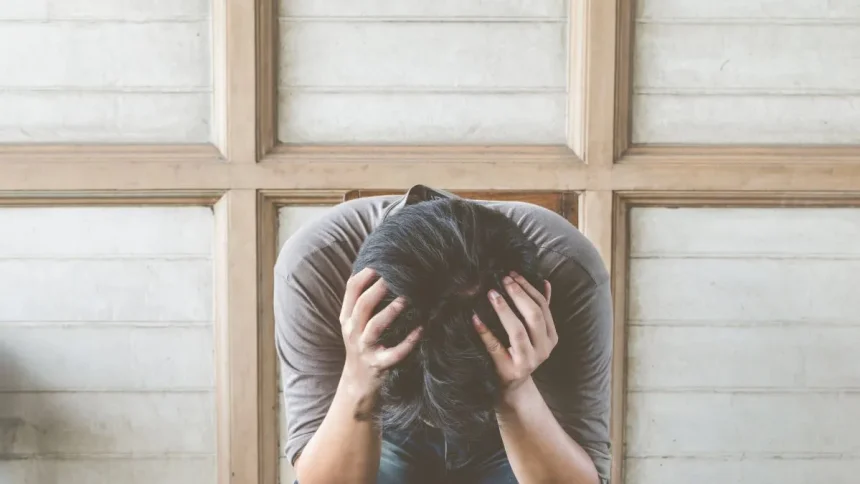Anxious Attachment Style
Anxious attachment style is when someone constantly fears being abandoned and needs a lot of reassurance from others. Knowing about this attachment style helps us understand ourselves and improve our relationships. When we understand anxious attachment, we can work on having healthier connections.
Where Anxious Attachment Comes From
Childhood Experiences
Anxious attachment often starts in childhood. If a child’s caregiver is sometimes there for them and sometimes not, the child might start to worry if their needs will be met. This worry can continue into adulthood.
Parenting Styles
How parents act can shape attachment styles. If parents are unpredictable with their love and support, children might become anxious. They might learn to be overly dependent on their parents for comfort.
Genetics and Environment
Besides parenting, genetics and the environment also play a role. If there’s a family history of anxiety or mental health issues, someone might be more likely to develop anxious attachment. Social and cultural environments also influence how attachment behaviors show up.
Traits of Anxious Attachment
Emotional Dependence
People with anxious attachment often rely heavily on others for emotional support. They might feel insecure and incomplete without constant reassurance from those they care about.
Fear of Being Abandoned
A big fear of being left alone is common. This fear can make people clingy and overly dependent, which can push others away even though they crave closeness.
High Anxiety in Relationships
Those with anxious attachment feel a lot of anxiety in relationships. They worry about their partner’s commitment and loyalty, which can lead to frequent doubts and insecurities.
Effects on Relationships
Clinginess and Need for Reassurance
People with anxious attachment often need constant reassurance. This can strain relationships because their partners might feel overwhelmed by the constant need for attention.
Jealousy and Trust Issues
Jealousy and trust issues are common. They might suspect their partner of cheating or have unfounded fears of betrayal, leading to arguments and misunderstandings.
Anxiety and Conflict Cycle
The anxiety and insecurity can create a cycle of conflict. The more anxious they get, the more they might act in ways that cause arguments, making them even more anxious.
Anxious Attachment in Romantic Relationships
Typical Behaviors
In romantic relationships, they might constantly check in on their partner, need frequent communication, and fear periods of separation.
Communication Problems
Communication can be tough. Their need for reassurance might lead to misunderstandings because their partner might not understand how deep their anxiety goes.
Balancing Closeness and Space
Finding a balance between closeness and space is crucial. Anxiously attached people need to learn that their partner’s need for space isn’t a sign of rejection.
Anxious Attachment in Friendships
Dependence on Friends
In friendships, they might rely heavily on friends for validation and support. They can feel hurt if friends don’t meet their emotional needs.
Managing Expectations
Managing expectations is key. They need to realize friends can’t always provide constant reassurance and find a balance in their expectations.
Building Healthy Friendships
Healthy friendships come from being self-reliant and seeking support from multiple people, not just a few friends. This can reduce pressure on any one relationship.
Anxious Attachment at Work
Performance Anxiety
At work, they might experience performance anxiety, always seeking approval and fearing criticism or failure.
Seeking Approval at Work
They often seek approval from colleagues and bosses, which can affect their job performance and workplace relationships.
Tips for Professional Growth
Professional growth involves building confidence, seeking feedback constructively, and setting realistic goals that don’t depend solely on external validation.
Self-Awareness and Self-Help
Recognizing Anxious Attachment
The first step is recognizing anxious attachment traits in oneself. Understanding these traits can help manage behaviors and triggers.
Mindfulness and Self-Compassion
Practicing mindfulness and self-compassion can reduce anxiety. Techniques like meditation and positive self-talk can help manage intense emotions.
Building Self-Esteem
Building self-esteem means recognizing one’s worth without needing external validation. Engaging in activities that foster a sense of accomplishment can help.
Therapy Approaches
Cognitive-Behavioral Therapy (CBT)
CBT can be effective for anxious attachment. It helps change negative thought patterns and behaviors related to anxiety.
Attachment-Based Therapy
This therapy focuses on understanding and changing attachment styles. It helps develop more secure attachment patterns through therapeutic relationships.
Couples Therapy
For couples, therapy can provide a safe space to address attachment issues, improve communication, build trust, and understand each other better.
Building Secure Attachment
Developing Secure Patterns
Developing secure attachment involves trusting oneself and others, setting healthy boundaries, and feeling secure in relationships.
Healthy Boundaries and Communication
Healthy boundaries and communication are crucial. Clear and respectful communication can reduce misunderstandings and strengthen relationships.
Support Systems
Support systems, like friends, family, and therapists, are vital. They provide the necessary support and encouragement for personal growth.
Technology’s Impact on Attachment Styles
Social Media and Anxious Attachment
Social media can worsen anxious attachment by creating unrealistic expectations and fostering comparison. Limiting social media use is important.
Online Dating and Anxiety
Online dating can increase anxiety because of the uncertainty and ambiguity. Clear communication and setting boundaries can help manage this anxiety.
Digital Detox and Mental Health
Taking breaks from digital devices can benefit mental health. Reducing screen time helps focus on real-life relationships and reduces anxiety.
Anxious Attachment Across Cultures
Cultural Differences in Attachment
Attachment styles can vary across cultures. Different cultural norms and values influence how attachment behaviors are expressed.
Cultural Norms and Values
Cultural norms and values shape attachment styles. Understanding these differences is important for managing relationships across cultures.
Cross-Cultural Relationships
Cross-cultural relationships require understanding and respecting different attachment styles influenced by cultural backgrounds.
Parenting and Breaking the Cycle
Parenting Tips for Secure Attachment
Parents can help children develop secure attachment by being consistent and responsive. This helps break the cycle of anxious attachment.
Educating Parents
Educating parents about attachment theory can help them support their children better and prevent anxious attachment from developing.
Helping Anxiously Attached Children
Supporting children with anxious attachment involves being responsive and consistent, helping them feel secure and valued.
Success Stories
Real-Life Experiences
Hearing real-life experiences of overcoming anxious attachment can be inspiring and provide practical tips.
Overcoming Anxious Attachment
Success stories show that it is possible to overcome anxious attachment with effort and support.
Lessons Learned
These stories often share valuable lessons learned during the journey to more secure attachment.
Understanding anxious attachment is the first step towards improving relationships and personal growth. By recognizing and addressing these patterns, we can work towards healthier and more secure connections.







